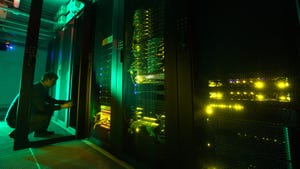How IT Decisions Impact Your Data Center
At Data Center World Global, learn how to collaborate across IT and facilities teams more effectively
The modern business is directly tied with the capabilities of IT. Most of all, your data center now impacts how you create business goals and entire strategic directives. This means that business leaders and data center facilities managers must work in unison to create a truly cohesive ecosystem.
And decisions and actions on the IT side of the house can have a profound impact on mechanical systems and resulting operating costs and capacity of the data center.
When all sides of the house collaborate, there are specific benefits to the business and the entire data center environment. Consider these top challenges that collaboration aims to overcome:
There is a lot of money being left on the table in the form of unrealized operating cost savings.
There is a lot of stranded capacity forcing redundant capital expenditure.
The lack of a shared understanding and cooperative effort causes a great deal of friction and wasted man hours.
At the Data Center World Global conference in Las Vegas, coming in March, learn how data center facilities and IT staff can collaborate more effectively.
In one of the sessions, Lars Strong, senior engineer at Upsite Technologies, will discuss the critical elements in effective collaboration. With extensive experience around data center optimization, Strong is a data center thought leader who regularly designs, develops, and contributes to complex technical specifications around data center environmental management technologies.
Read more: What IT Managers Need to Know about Data Center Cooling
When it comes to the modern data center, there are several challenges, according to Strong:
Because of advances on both the facilities and IT sides of the business, it is no longer possible for the two organizations to operate independently; not if an organization is to be competitive.
Understanding IT equipment delta T and its relationship to cooling unit delta T is crucial to optimizing efficiency of the cooling infrastructure.
AFM best practices are not just nice to have; they significantly affect overall operating cost of the facility.
“By understanding these relationships, IT and facilities management should be able to form a more cooperative approach to managing the data center, resulting in a more effective and efficient operation, thereby better fulfilling often contradictory objectives,” Strong said.
“The end goal in discussing these considerations is to have an agreement between IT and facilities as to how these decisions impact the other. To ensure efficiency and optimize the data center, both teams need to work together and understand the impact that the aforementioned considerations will ultimately have on the data center environment.”
Want to learn more? Join Upsite's Lars Strong and 1,300 of your peers at Data Center World Global 2016, March 14-18, in Las Vegas, NV, for a real-world, “get it done” approach to converging efficiency, resiliency and agility for data center leadership in the digital enterprise. More details on the Data Center World website.
About the Author
You May Also Like



.jpg?width=300&auto=webp&quality=80&disable=upscale)





